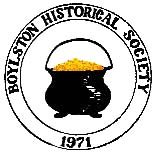John B. Gough
John Barthlomew Gough
1817-1886
Biography:
Born in Sandgate, Kent, England in 1817, John Gough immigrated to the United States when he was only twelve years old. He learned the bookbinder's trade and later took to the stage. Neither career was satisfying nor lucrative.
His mother and sister also came to America. His mother died of a stroke and Gough, despondent, began to drink. He married in 1838. The couple had a daughter but unfortunately, both mother and child died, within days of each other.
By the age of 25, Gough was unemployed, homeless, and a confirmed drunkard. In 1842 he attended a temperance meeting in Worcester, Massachusetts here he took a pledge to totally abstain from liquor. He began to tell his story to eager audiences and soon embarked on a career of lecturing against the evils of drink. During his career, Gough delivered some 9,600 lectures to more than nine million people in America, Canada, England, Scotland, and Ireland.
He married a second time to Mary Whitcomb whom he met in Boylston, Massachusetts. In 1848, he built his home, "Hillside," in the Morningdale section of Boylston.
Gough made three overseas tours and traveled extensively throughout the United States becoming the most sought after temperance lecturer in the country.
When he died in 1886, the New York Times wrote he "was probably better known in this country and in Great Britain than any other public speaker." Mr. Gough was one of this country's most influential social reformers who helped to solve one of America's most pressing problems.
HILLSIDE:
"Hillside," the mansion house of John b. Gough, was built in 1848 in what is now called the Morningdale section of Boylston. Contemporaries regarded the house as one of the three loveliest mansions in the Commonwealth of Massachusetts along with The Wesson Mansion known as "White Cliffs" in Northborough and the Daniel Webster home in Marshfield.
The house is a spacious New England farmhouse, two stories tall with a single-story bay on each side. It was built in an Italianate style with a large front porch and cupola. There were twenty rooms, some of which were added on in the early 1860's. Downstairs rooms included a parlor, conservatory, library, and dining room.
Vast amounts of time and money were spent to grade the lawns and in developing a spring which supplied water to the house. Farm buildings included several barns, three hen houses, a carriage house, and a gymnasium with a bowling alley.
"Hillside" was a working farm. Mrs. Gough kept 1000 chickens, numerous riding horses, cows, swine, sheep, and oxen. The land yielded grain, hay, vegetables, and fruit in abundance.
The scenic roadway leading to the house was line with elm trees interspersed with syringa bushes that exuded a lovely fragrance.
The interior was tastefully decorated with paintings and engravings covering the walls. the library held 3000 books, many of which were exquisitely bound.
The famous and near famous visited "Hillside" including a former U.S. president, clergymen, artists, politicians, and temperance leaders.
"Hillside" is one of Boylston's greatest treasures. Its importance is not only local but figures prominently in American history. In 1975, it was placed on the National Register of Historic Sites.
EXHIBIT:
The first John B. Gough exhibit took place on 5 October 1980. The Society obtained Gough possessions from many Boylston townspeople, its library, as well as Arthur and Helen Knight of Lower Waterford, Vermont. Mrs. Knight was the grandniece of May Gough Allen, the daughter of Herbert D. Gough, John B. Gough's brother. May along with her parents had also resided for a time in Hillside.
The exhibit opened with some fanfare with area newspaper coverage. The Society proudly announced that it had the largest Gough collection in America. Additional Gough possessions were obtained for the museum from Mrs. Elizabeth Marble of Ashburnham, the daughter of Arthur and Helen Knight.
Additional period pieces were added to the Gough collection to enhance a period display. The new exhibition opened on 2 May 1999 to coincide with "The John B. Gough Day" celebrations. The staff members who took part in creating this new display included: William O. Dupris, Frederick G. Brown, Betty Thomas, Judith Haynes, Norman H. French and Pamela Makenzie.
